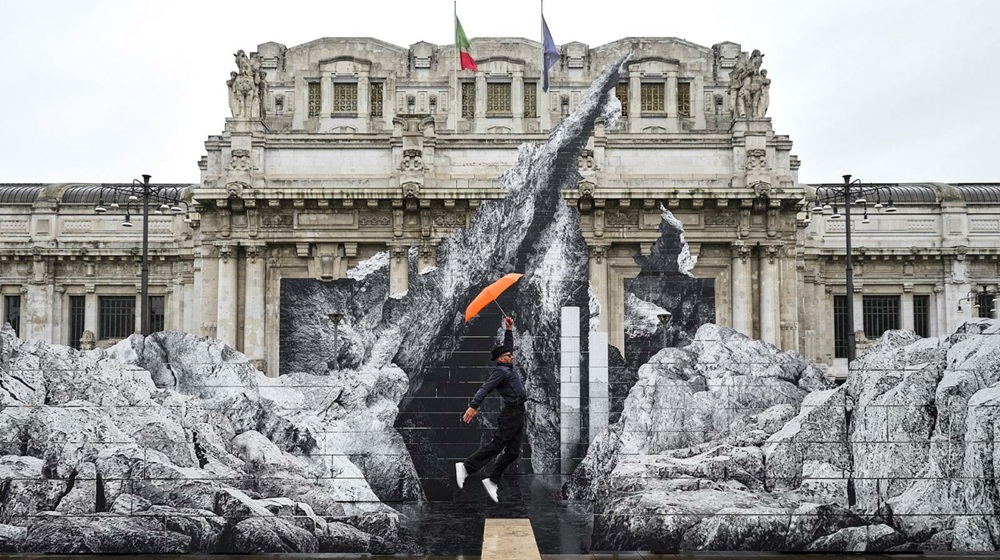Once upon a time, in the Parisian region, there was a young artist named JR, or Jean René. Born in 1983, he wasn’t your typical art student. Instead of classrooms, JR’s teenage years were spent scaling the rooftops and diving into the subways of Paris with his friends. It was a wild and daring time, fueled by a love for urban art.
One fateful day, while exploring the Paris metro, JR stumbled upon a hidden treasure – a camera left behind by a tourist. This chance encounter sparked a new passion within him. He saw the camera as a key to capturing the incredible world of street art he’d been exploring.
JR was familiar with the artistic scene. Before, he’d dabbled in graffiti, but the camera opened a new way to express himself. JR began documenting the faces and stories hidden within the city’s walls with his newfound tool. His goal? To break down the physical and symbolic barriers that these walls created. He wanted his art to spark questions, to make people stop and ponder the world around them.
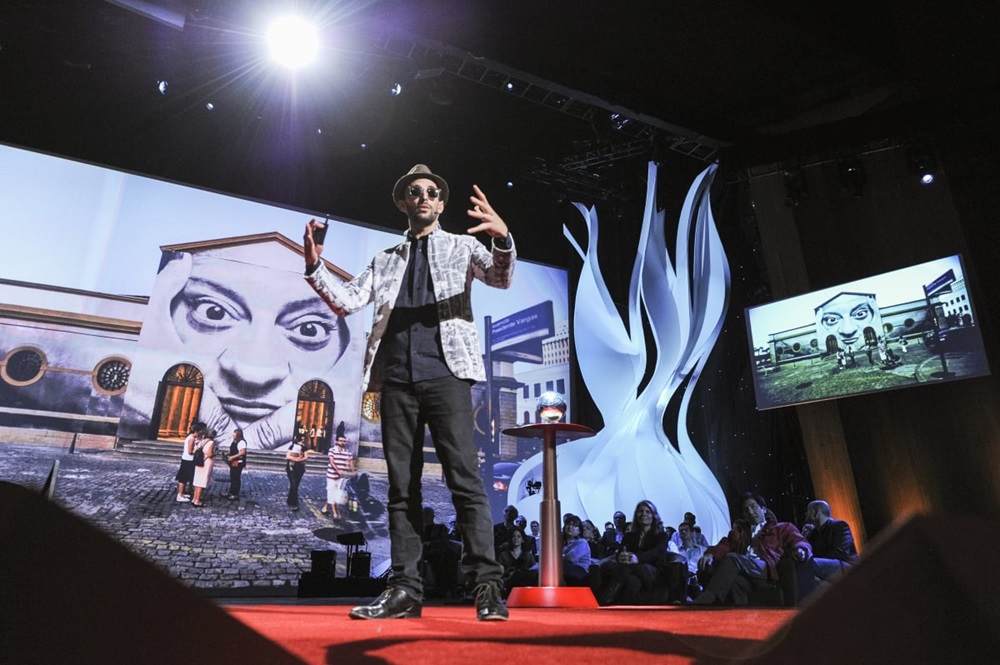
It all started with a lucky find in a metro station. But for JR, this was just the beginning of a remarkable journey that would transform him from a curious teenager into a world-renowned artist.
Forget museums and galleries; JR’s art lives on the streets! Except for that, once at a Paris gallery, JR prefers to transform entire cities into his open-air museum.
Imagine walking down a street in New York or Rio, and BAM! You come face-to-face with giant portraits plastered on buildings. These black and white giants are JR’s speciality –portraits of everyday people that catch everyone’s eye.
“The city is an open-air museum,” JR likes to say. He believes his art should be accessible to everyone, not just those who visit museums.
One time, JR travelled to Cartagena, Colombia. He met with the city’s elders and proposed a project called “The Furrows of the City.” This project focused on the wrinkles on people’s faces, a map of their life stories etched onto their skin. Like a city, these faces told a story of change, with some parts evolving faster than others.

In 2013, JR took his art to the heart of New York City – Times Square! He set up a photo booth, inviting tourists and locals to take portraits. These portraits then became pieces of a giant human fresco that grew right under the feet of busy New Yorkers. He used the ground as his canvas for a massive portrait of a walking immigrant towering over 50 meters tall! This project, “Walking New York,” was featured on the cover of the New York Times Magazine.
Creating these giant installations is a challenging feat. JR is part photographer, part acrobat, scaling buildings and navigating tight spaces to bring his art to life. You might even see him exploring villages with famed filmmaker Agnès Varda – together, they created the documentary “Visages Villages.”
JR manages his small team work by selling prints and single pieces. Some pieces can fetch a hefty sum, allowing JR to keep creating massive public art displays.
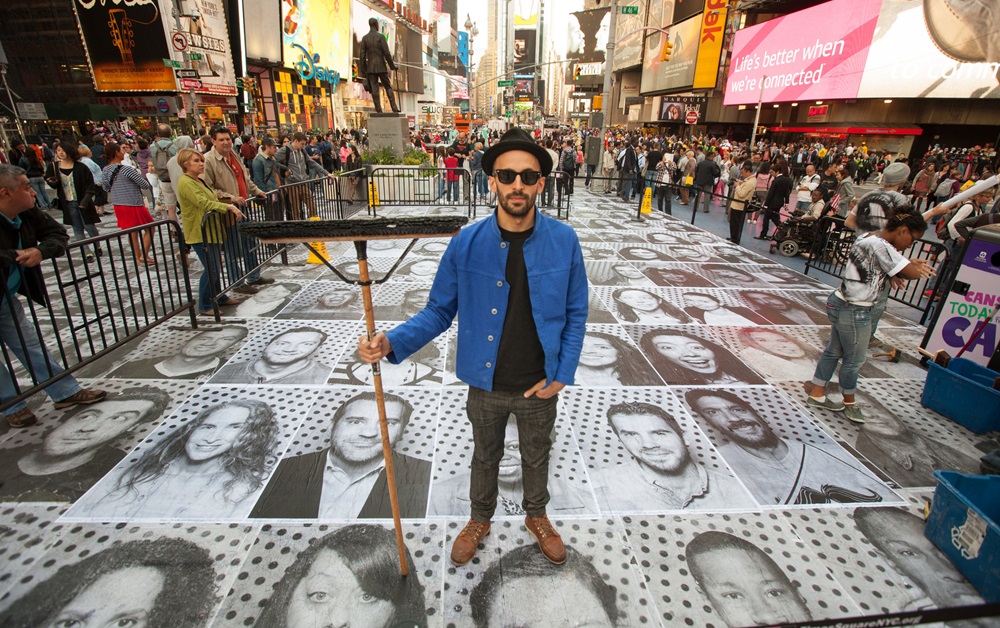
JR doesn’t shy away from using his art to promote what he believes in. In 2011, he launched a project called “Inside Out.” He parked a van with a photo booth in Paris, inviting people to have their portraits taken and displayed as messages of peace and unity. This project travelled across France and reached cities worldwide, from Tokyo to Toronto.
JR’s fearless in breaking the rules. These “Face2Face” portraits were technically illegal, but with the help of locals, JR managed to pull it off. It became the world’s most giant illicit exhibition photo. Another project, “Women Are Heroes,” took JR worldwide. He met with women living in war zones and facing violence, yet full of strength and resilience. He documented their stories and shared them with the world through a film that even got selected for the Cannes Film Festival.
JR’s art is all about sparking questions. He wants us to look at each other, understand each other, and find ways to live together in this wild world. Take his “Unframed” project, for example. Giant portraits of immigrants are plastered on the abandoned Ellis Island, which is a place that once welcomed newcomers to America. It’s a powerful reminder of the history of immigration and the ongoing debate today.
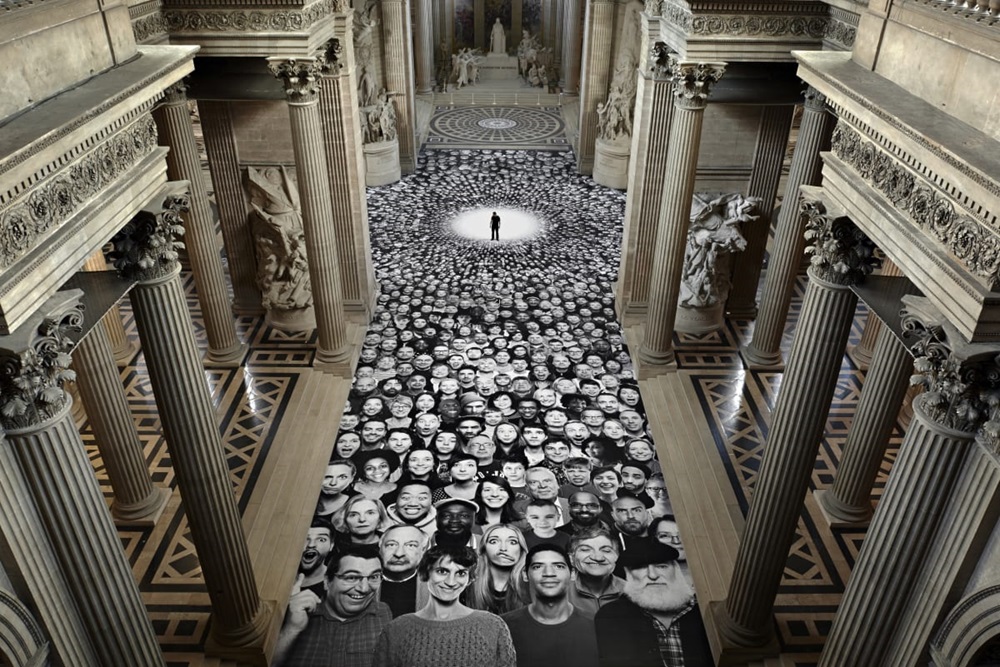
JR’s latest obsession? Borders. He used a giant portrait of a child looking over the US-Mexico border wall to make a statement about separation and family. For JR, it’s all about perspective. Where you stand changes how you see the world, and his art challenges us to consider all sides.
Serge July, a journalist, says it perfectly: JR’s a “participative and planetary” artist. He uses walls worldwide as his canvas, giving a voice to the voiceless – women, minorities, immigrants, and those often invisible to society. He doesn’t shy away from tough topics, but he does it with beauty and hope for a more understanding world.
Some even compare him to the photographer Henri Cartier-Bresson but of the 21st century!

His dedication caught the eye of the TED Foundation, which awarded him a prestigious prize in 2010. JR used the prize money to launch a new project called “Inside Out,” another example of his commitment to using art for social change. JR’s work is so influential that he even made it onto Time Magazine’s list of the 100 Most Influential People of 2018. It’s not good for a guy who started plastering photos on the streets.
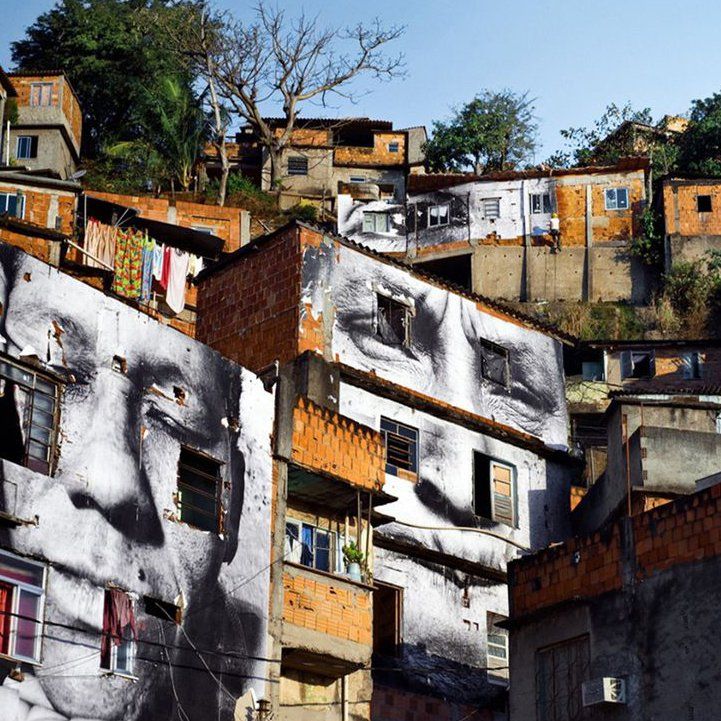
Feature image: Photo credits: La Nascita, Milano Centrale, Italia, 2024 (c) JR

Jain Syriac Babu is a Kerala-born, Italy-based theatre artist and art enthusiast.

